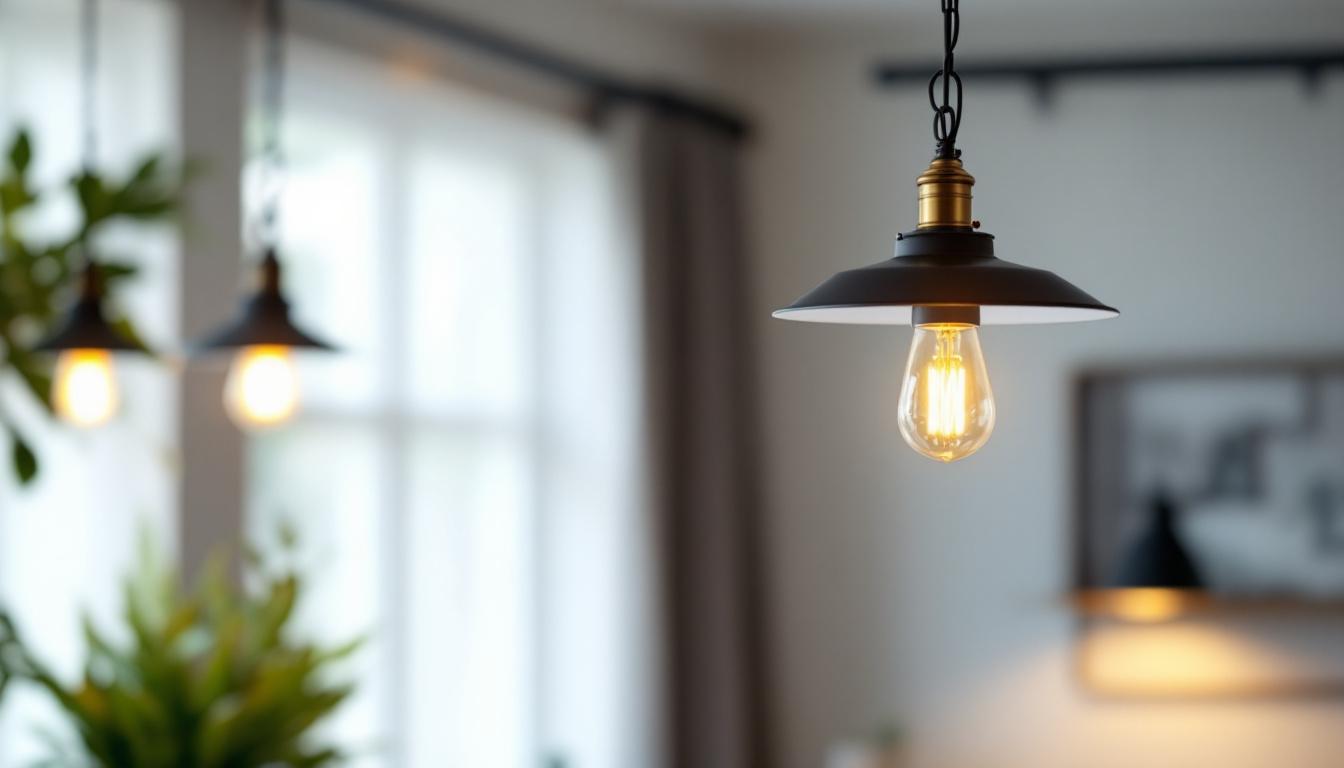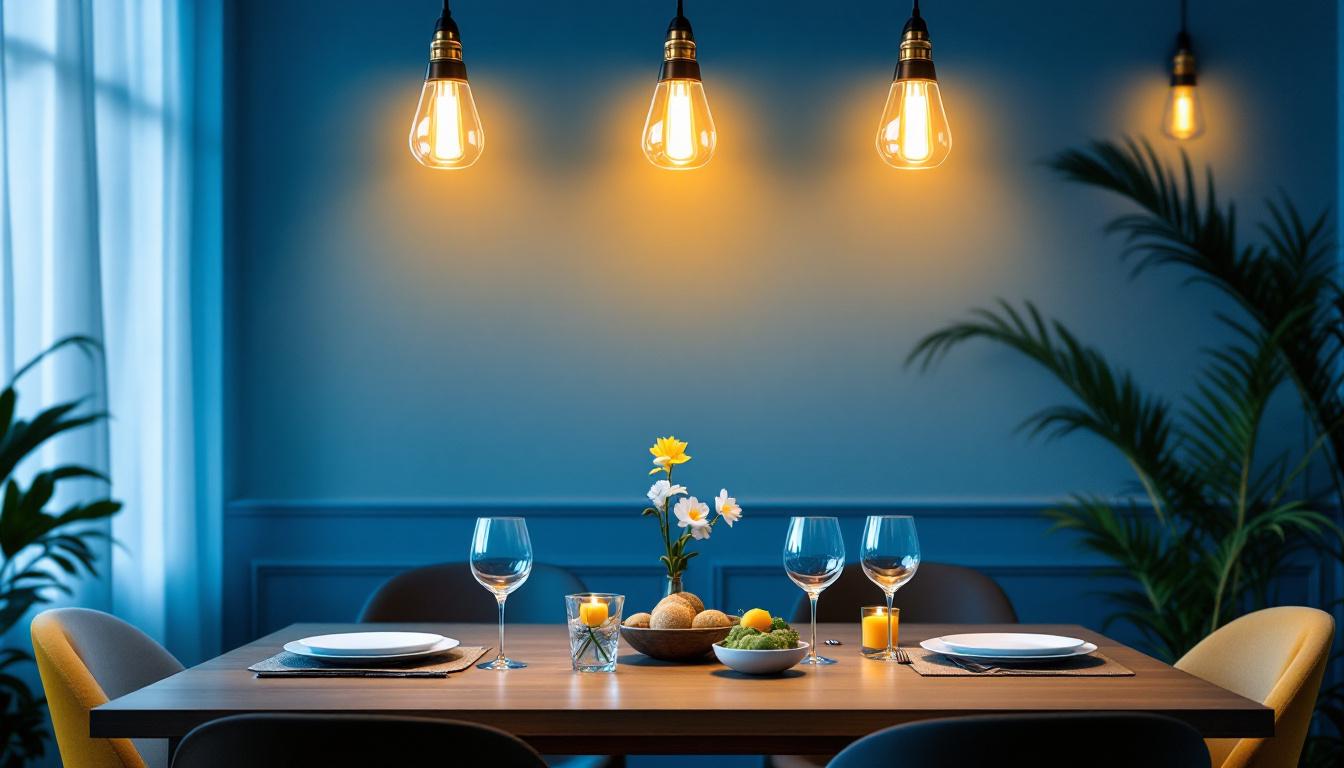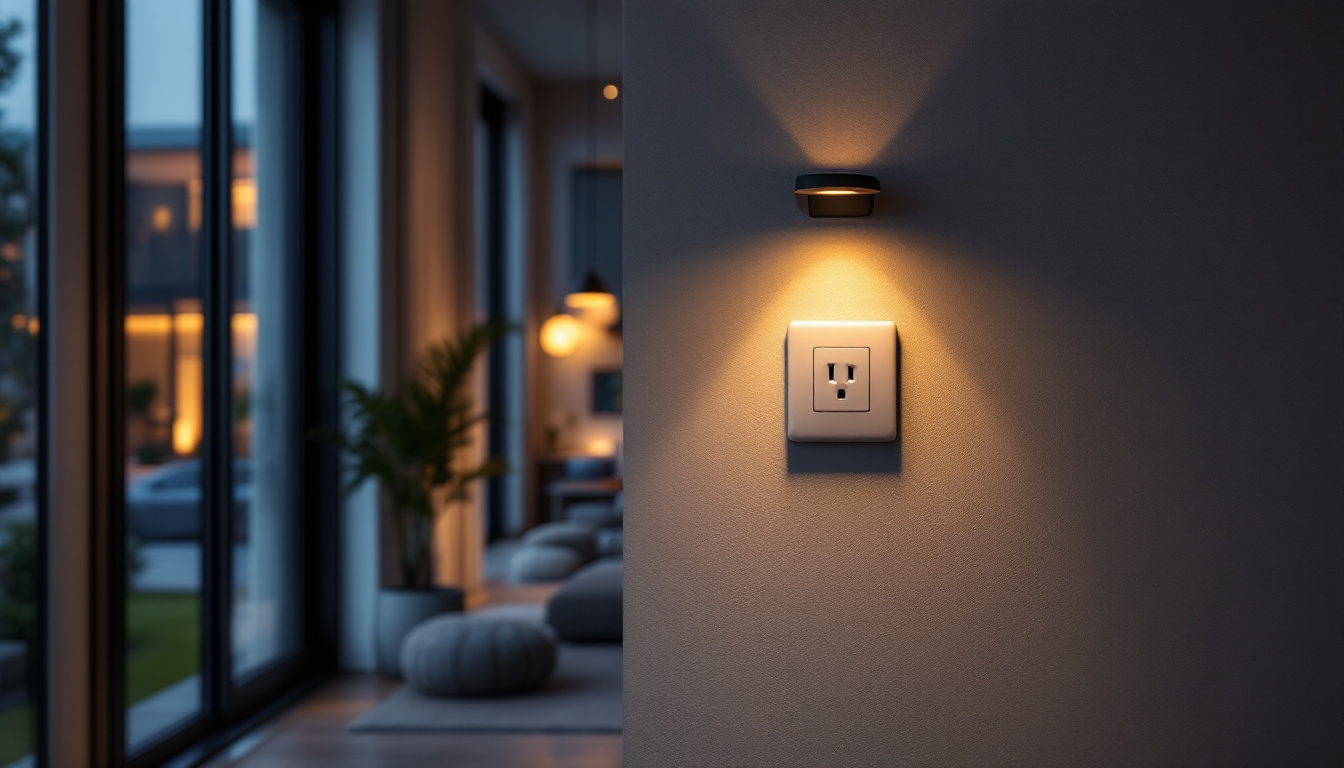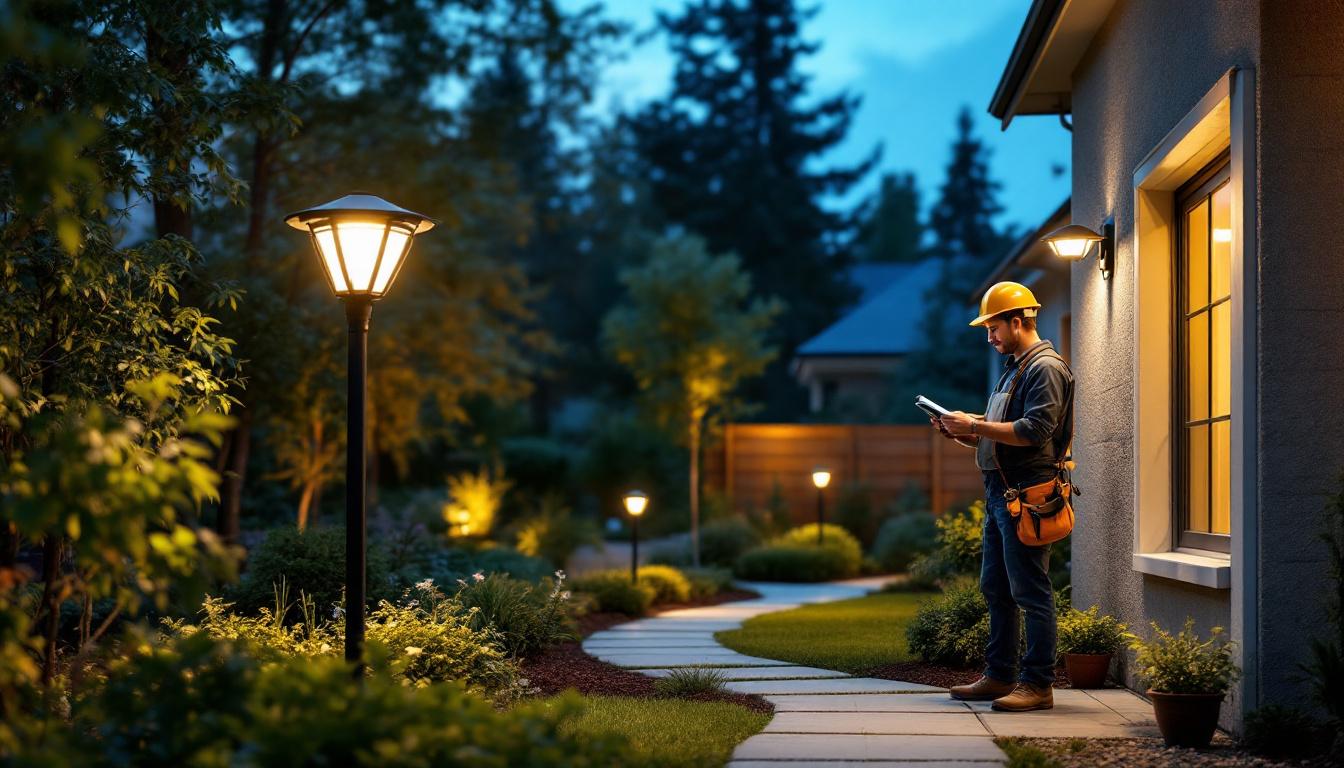
Pendant lights have become a staple in modern interior design, offering both functionality and aesthetic appeal. These fixtures hang from the ceiling, typically suspended by a chain, rod, or cord, providing direct lighting to specific areas. Their versatility allows them to be used in various settings, from residential kitchens to commercial spaces.
For lighting contractors, understanding the nuances of pendant lighting is crucial. Not only does it involve selecting the right fixtures, but it also encompasses installation techniques, electrical considerations, and design integration. This article will delve into the essential points that lighting contractors should consider when working with pendant lights on a chain.
Before diving into installation and design considerations, it is vital to understand the different types of pendant lights available. These can be categorized based on their design, functionality, and intended use.
Some common types include single pendants, multi-pendant arrangements, and mini pendants. Single pendants are ideal for focused lighting, while multi-pendant arrangements can create a dramatic effect in larger spaces. Mini pendants are perfect for smaller areas or as accent lighting. Each type offers unique benefits and can complement various design styles. Additionally, there are also adjustable pendant lights that allow users to modify the height according to their needs, making them a flexible choice for spaces that may require different lighting levels at various times.
When selecting pendant lights, the design must align with the overall aesthetic of the space. Lighting contractors should consider factors such as color, material, and style. For instance, a sleek metal pendant may suit a contemporary kitchen, while a vintage glass pendant could enhance a rustic dining area.
Moreover, the height at which the pendant is hung plays a significant role in both functionality and design. General guidelines suggest that pendants should hang approximately 30 to 36 inches above countertops or tables. However, this can vary based on the specific design and purpose of the fixture. It’s also essential to consider the scale of the pendant in relation to the surrounding furniture and architecture; a large, bold pendant can serve as a statement piece, while smaller fixtures may blend seamlessly into the background. Additionally, the use of dimmable options can enhance the versatility of pendant lighting, allowing for mood adjustments that can transform the ambiance of a space from bright and vibrant to soft and intimate with just a flick of a switch.
Proper installation is crucial for the safety and functionality of pendant lights. Lighting contractors must be familiar with the various installation techniques to ensure that the fixtures are securely mounted and properly wired. A well-installed pendant light not only enhances the aesthetic appeal of a room but also ensures optimal lighting performance, making it essential for contractors to stay updated on best practices and innovative installation methods.
When installing pendant lights on a chain, it is essential to consider the weight of the fixture. Heavier pendants may require additional support, such as a ceiling brace, to ensure stability. Furthermore, the chain length should be adjusted according to the desired height, taking into account the overall design and functionality of the space. For instance, in dining areas, pendant lights should hang approximately 30 to 36 inches above the table to provide adequate illumination without obstructing views. Additionally, considering the spacing between multiple pendants can create a cohesive look while ensuring even light distribution across the area.
Electrical considerations are paramount when installing pendant lights. Contractors must ensure that the electrical wiring can support the load of the fixture. This involves checking the circuit capacity and ensuring that the wiring is up to code. It’s also advisable to assess the existing electrical infrastructure, as older homes may require upgrades to accommodate modern lighting fixtures safely. In some cases, installing a dedicated circuit for pendant lights can help prevent overloads and ensure consistent performance.
Additionally, it is crucial to use the appropriate type of bulb for the pendant light. LED bulbs are often recommended due to their energy efficiency and longevity. However, contractors should also consider the color temperature of the bulbs to achieve the desired ambiance in the space. Warmer tones can create a cozy atmosphere, while cooler tones are ideal for task-oriented areas. Furthermore, dimmable bulbs and compatible dimmer switches can enhance versatility, allowing homeowners to adjust the lighting according to their mood and activities.
Safety should always be a top priority during the installation of pendant lights. Contractors should adhere to local building codes and regulations to ensure compliance. This includes using the right tools and equipment, as well as following proper electrical safety procedures. It is also beneficial for contractors to stay informed about any changes in electrical codes, as these can impact installation practices and safety measures.
Before starting the installation, it is advisable to turn off the power to the circuit to prevent any accidents. Additionally, using a voltage tester can help confirm that the power is off before handling any wiring. Wearing appropriate personal protective equipment, such as gloves and safety goggles, can further enhance safety during the installation process. Moreover, it is wise to have a second person assist during the installation, especially when lifting heavier fixtures, to ensure that everything is handled safely and efficiently. Taking these precautions not only safeguards the contractor but also ensures the longevity and reliability of the installed lighting fixtures.
The chain used to suspend pendant lights can significantly impact both the aesthetic and functionality of the fixture. Lighting contractors must consider various factors when selecting the appropriate chain for a specific pendant light.
Chains come in various materials, including metal, plastic, and even decorative options. The choice of material should complement the design of the pendant light and the overall decor of the space. For instance, a rustic wooden chain may suit a farmhouse-style pendant, while a sleek metal chain may be more appropriate for a modern fixture.
Adjusting the chain length is a critical aspect of installation. The height at which the pendant light hangs can affect both the functionality and the visual appeal of the space. Lighting contractors should take into account the height of the ceiling and the intended use of the area when determining the appropriate chain length.
In some cases, adjustable chains may be beneficial, allowing for flexibility in height based on the needs of the space. This can be particularly useful in areas where the lighting needs may change, such as dining areas or workspaces.
Proper maintenance of pendant lights is essential to ensure their longevity and performance. Lighting contractors should advise clients on how to care for their fixtures, including regular cleaning and inspections.
Dust and debris can accumulate on pendant lights, affecting their brightness and overall appearance. Regularly wiping down the fixtures with a soft cloth can help maintain their aesthetic appeal. Additionally, checking the electrical connections periodically can prevent potential issues down the line.
Pendant lights can serve as focal points in a room, making them an essential consideration in any design scheme. Lighting contractors must understand how to integrate these fixtures seamlessly into various spaces.
One effective approach is to use pendant lights to define different areas within an open floor plan. For example, a cluster of pendant lights above a kitchen island can delineate the cooking space from the dining area, adding both functionality and style.
Layering light is a crucial concept in interior design, and pendant lights can play a significant role in this strategy. By combining ambient, task, and accent lighting, contractors can create a well-balanced lighting scheme.
Pendant lights often serve as task lighting, providing focused illumination for specific activities such as cooking or reading. However, they can also contribute to ambient lighting when used in conjunction with other fixtures, such as wall sconces or recessed lighting.
To achieve a cohesive look, it is essential to consider the style and finish of pendant lights in relation to other fixtures in the space. Lighting contractors should aim for harmony in design elements, ensuring that the pendant lights complement rather than clash with existing decor.
For instance, if a space features brushed nickel finishes, selecting pendant lights with a similar finish can create a unified aesthetic. Additionally, considering the scale and proportion of the pendant lights in relation to the surrounding furniture can enhance the overall design.
While working with pendant lights, there are several common mistakes that lighting contractors should be aware of to ensure a successful installation and design integration.
One frequent error is hanging pendant lights too high or too low. This can affect both the functionality of the lighting and the visual balance of the space. It is essential to follow recommended height guidelines while also considering the specific needs of the area.
Another common mistake is overlooking the electrical requirements of pendant lights. Contractors must ensure that the wiring can support the load of the fixture and that the circuit is properly rated. Failing to do so can lead to safety hazards and potential electrical issues.
Additionally, using the wrong type of bulb can impact both the performance and energy efficiency of the fixture. It is crucial to select bulbs that are compatible with the pendant light and that meet the desired lighting needs.
Finally, ignoring client preferences can lead to dissatisfaction with the final result. Lighting contractors should engage clients in the design process, discussing their preferences and needs to ensure that the chosen pendant lights align with their vision.
Incorporating client feedback can enhance the overall project and result in a more satisfying outcome for both the contractor and the client.
Pendant lights on a chain offer a unique blend of style and functionality, making them an excellent choice for various spaces. For lighting contractors, understanding the intricacies of these fixtures is essential for successful installation and design integration.
From selecting the right type of pendant light to ensuring proper installation and maintenance, there are numerous factors to consider. By being aware of common mistakes and engaging clients in the design process, contractors can create stunning lighting solutions that enhance the overall aesthetic of any space.
As the demand for stylish and functional lighting continues to grow, staying informed about the latest trends and best practices in pendant lighting will be invaluable for lighting contractors looking to excel in their field.
Ready to elevate your lighting projects with the perfect pendant lights on a chain? Look no further than LumenWholesale, where we provide lighting contractors with an exceptional range of high-quality, spec-grade lighting products at the most competitive wholesale prices. Say goodbye to local distributor markups and hello to our direct-to-you savings, free shipping, and the convenience that comes with bulk buying. With our commitment to quality, affordability, and customer satisfaction, you can trust that your lighting solutions will shine brightly and endure. Discover the value that awaits you at Wholesale Lighting at the Best Value and make your next project a beacon of success.

Discover essential dinner switch lighting tips from top contractors to enhance safety, efficiency, and ambiance.

Discover how motion sensor outlets can revolutionize lighting installations by enhancing energy efficiency and reducing costs.

Discover how mounted solar lights are revolutionizing the lighting industry, offering contractors an eco-friendly, cost-effective solution that enhances outdoor spaces while boosting business success..

Discover the essential insights lighting contractors need about vapor tight lighting.